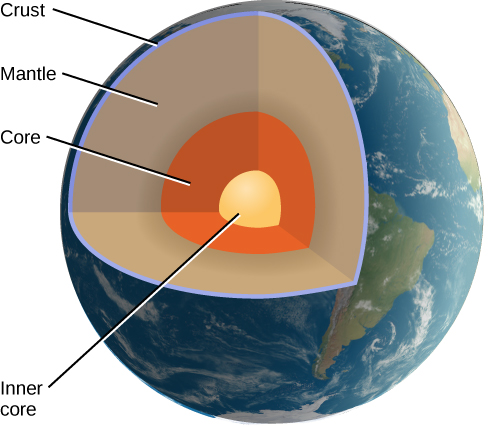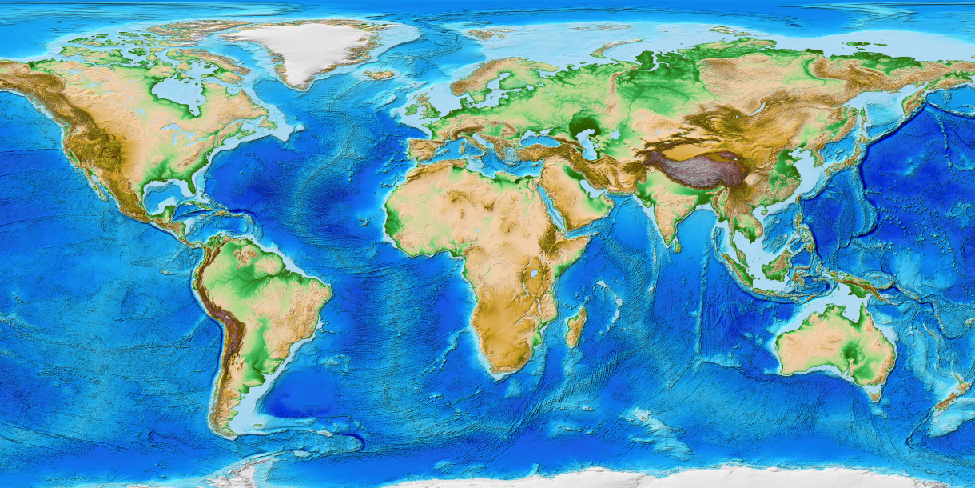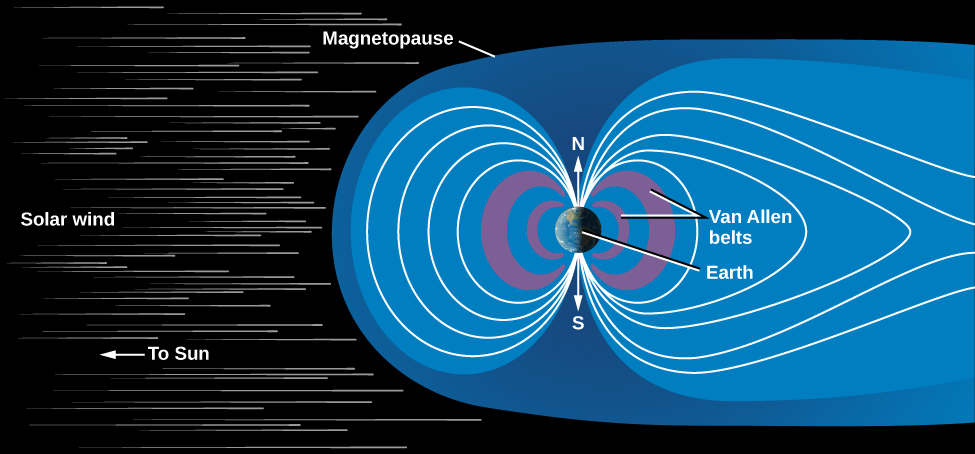| << Chapter < Page | Chapter >> Page > |

The top layer is the crust , the part of Earth we know best ( [link] ). Oceanic crust covers 55% of Earth’s surface and lies mostly submerged under the oceans. It is typically about 6 kilometers thick and is composed of volcanic rocks called basalt . Produced by the cooling of volcanic lava, basalts are made primarily of the elements silicon, oxygen, iron, aluminum, and magnesium. The continental crust covers 45% of the surface, some of which is also beneath the oceans. The continental crust is 20 to 70 kilometers thick and is composed predominantly of a different volcanic class of silicates (rocks made of silicon and oxygen) called granite . These crustal rocks, both oceanic and continental, typically have densities of about 3 g/cm 3 . (For comparison, the density of water is 1 g/cm 3 .) The crust is the easiest layer for geologists to study, but it makes up only about 0.3% of the total mass of Earth.

The largest part of the solid Earth, called the mantle , stretches from the base of the crust downward to a depth of 2900 kilometers. The mantle is more or less solid, but at the temperatures and pressures found there, mantle rock can deform and flow slowly. The density in the mantle increases downward from about 3.5 g/cm 3 to more than 5 g/cm 3 as a result of the compression produced by the weight of overlying material. Samples of upper mantle material are occasionally ejected from volcanoes, permitting a detailed analysis of its chemistry.
Beginning at a depth of 2900 kilometers, we encounter the dense metallic core of Earth. With a diameter of 7000 kilometers, our core is substantially larger than the entire planet Mercury. The outer core is liquid, but the innermost part of the core (about 2400 kilometers in diameter) is probably solid. In addition to iron, the core probably also contains substantial quantities of nickel and sulfur, all compressed to a very high density.
The separation of Earth into layers of different densities is an example of differentiation, the process of sorting the major components of a planet by density. The fact that Earth is differentiated suggests that it was once warm enough for its interior to melt, permitting the heavier metals to sink to the center and form the dense core. Evidence for differentiation comes from comparing the planet’s bulk density (5.5 g/cm 3 ) with the surface materials (3 g/cm 3 ) to suggest that denser material must be buried in the core.
We can find additional clues about Earth’s interior from its magnetic field. Our planet behaves in some ways as if a giant bar magnet were inside it, aligned approximately with the rotational poles of Earth. This magnetic field is generated by moving material in Earth’s liquid metallic core. As the liquid metal inside Earth circulates, it sets up a circulating electric current. When many charged particles are moving together like that—in the laboratory or on the scale of an entire planet—they produce a magnetic field.
Earth’s magnetic field extends into surrounding space. When a charged particle encounters a magnetic field in space, it becomes trapped in the magnetic zone. Above Earth’s atmosphere, our field is able to trap small quantities of electrons and other atomic particles. This region, called the magnetosphere , is defined as the zone within which Earth’s magnetic field dominates over the weak interplanetary magnetic field that extends outward from the Sun ( [link] ).

Where do the charged particles trapped in our magnetosphere come from? They flow outward from the hot surface of the Sun; this is called the solar wind . It not only provides particles for Earth’s magnetic field to trap, it also stretches our field in the direction pointing away from the Sun. Typically, Earth’s magnetosphere extends about 60,000 kilometers, or 10 Earth radii, in the direction of the Sun. But, in the direction away from the Sun, the magnetic field can reach as far as the orbit of the Moon, and sometimes farther.
The magnetosphere was discovered in 1958 by instruments on the first US Earth satellite, Explorer 1 , which recorded the ions (charged particles) trapped in its inner part. The regions of high-energy ions in the magnetosphere are often called the Van Allen belts in recognition of the University of Iowa professor who built the scientific instrumentation for Explorer 1 . Since 1958, hundreds of spacecraft have explored various regions of the magnetosphere. You can read more about its interaction with the Sun in a later chapter.
Earth is the prototype terrestrial planet. Its interior composition and structure are probed using seismic waves. Such studies reveal that Earth has a metal core and a silicate mantle. The outer layer, or crust, consists primarily of oceanic basalt and continental granite. A global magnetic field, generated in the core, produces Earth’s magnetosphere, which can trap charged atomic particles.

Notification Switch
Would you like to follow the 'Astronomy' conversation and receive update notifications?